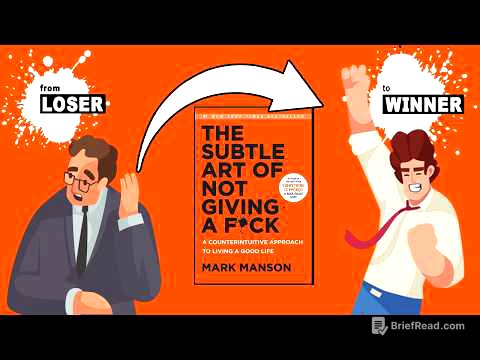TLDR;
This video explains how to identify key spots on trading charts to catch big market moves by understanding market maker strategies. It details how market makers manipulate the market to rebalance their positions after periods of high demand and provides a three-step formula for traders to profit from these manipulations. The video also teaches how to identify contraction phases using lower highs and higher lows after a trend phase, and illustrates these concepts with examples from EUR/USD, Tesla stock, and GBP/USD charts.
- Market makers manipulate supply to rebalance positions after high demand.
- Traders can profit by accumulating inventory with market makers at discounted prices and selling as demand returns.
- Contraction phases, identified by simultaneous lower highs and higher lows after a trend, indicate potential manipulation zones.
Introduction: Catching Big Moves in Trading [0:00]
The lesson focuses on identifying specific spots on trading charts that allow traders to catch significant market movements. It addresses the common scenario where good news drives demand and price increases, followed by a peak, a drop, and a consolidation phase. This consolidation often confuses traders, who are unsure of the market's next direction, leading to potential losses on both long and short positions.
Understanding Market Maker Manipulation [0:54]
The market stops moving up because the initial demand needs to be fulfilled by sellers, primarily the market makers. When market makers sell into the demand spike, they become net short, which is problematic if the market continues upward. To rectify this, market makers use manipulation strategies. They suppress the price, causing traders to doubt the market's strength. By introducing more supply, they drive the price down, triggering panic selling and creating buying opportunities for themselves to rebalance their portfolio and accumulate new buy inventory.
Three-Step Formula for Catching Big Moves [3:39]
The formula involves three steps. First, identify a contraction box, assuming it is pre-loaded with strong demand based on positive news, higher time frame trends, and strong momentum. Second, when the market dips below the equilibrium point of this box, accumulate inventory by buying, which minimizes risk if the demand doesn't return. Third, sell your inventory as the market rises again due to renewed retail trader demand, profiting alongside the market maker. This process can be repeated each time the market returns to the contraction zone.
Real-World Example: EUR/USD [5:43]
The strategy was recently exemplified in the EUR/USD currency pair following non-farm payroll data. The daily chart indicated a long ATS trend, suggesting incoming demand. On the 30-minute chart, a contraction phase was identified. The market maker manipulated the price downward before boosting it back up through fair market value, leading to a significant move after the non-farm payroll release. Currently, the market is in a fresh contraction, posing the question of whether the demand will hold and what action to take if the market dips below the equilibrium point.
Identifying the Contraction Phase [6:56]
A contraction is defined by simultaneous lower highs and higher lows, often resembling a wedge pattern. The key is to identify this pattern after a trend phase has already occurred. Look for a leg of price action that moves up but doesn't surpass the previous high, followed by another leg that doesn't fall below the previous low. Once this pattern is observed, a box can be drawn around the price action to mark the contraction phase.
Chart Examples: Tesla and GBP/USD [8:42]
On a 30-minute chart of Tesla stock, contraction areas are marked out. If the expectation is that demand will continue, buying below the fair market value line of a contraction box is advisable, with profit protection at higher levels. For GBP/USD, weekly charts show the general flow of money, while 30-minute charts highlight recent contraction phases. The current market action is assessed to determine if it represents manipulation for portfolio rebalancing or a potential reversal, based on whether the price holds above fair market value or collapses below it.
Free Educational Resource [11:44]
The presenter promotes a free 8-hour course called the Master Pattern Academy available on trade ats.com, which provides detailed explanations of the trading methodologies discussed in the video.









